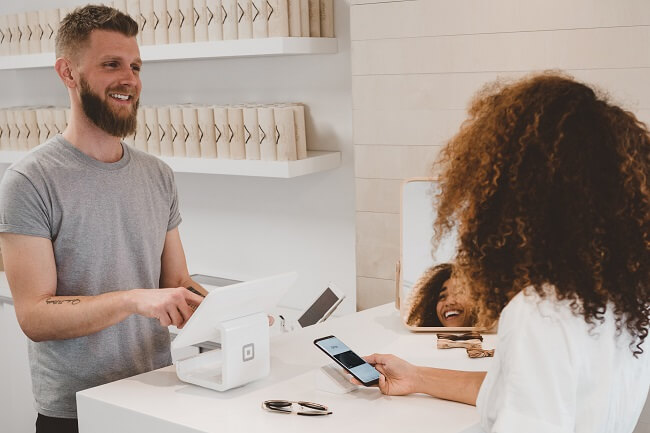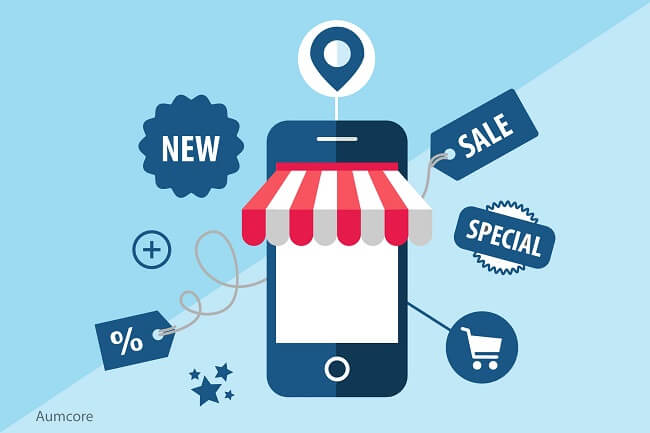In the ever-evolving landscape of marketing, customer experience (CX) remains a pivotal factor that directly impacts a company’s success. As we venture further into 2023, marketers need to stay on top of the latest trends that shape customer expectations and preferences. From personalized interactions to seamless omnichannel experiences, understanding and adapting to these trends is essential for building lasting customer relationships.
Statistics reveal compelling insights about the importance of customer experience in driving business growth. According to a recent study by PwC, 73% of consumers consider CX as a crucial factor in their purchasing decisions. Furthermore, a survey conducted by Salesforce highlights that 84% of customers value being treated like a person, not a number. Additionally, Gartner predicts that by 2025, 37% of all customer service engagements will involve AI-based virtual assistants.
To navigate this ever-changing landscape successfully, marketers must keep their finger on the pulse of these trends and leverage them to create exceptional customer experiences. By doing so, businesses can cultivate customer loyalty, increase retention rates, and gain a competitive edge.
The Benefits of Good Customer Experience
While it may be difficult to measure with a KPI or a specific number, the importance of customer experience cannot be overstated. The impact it can have is huge and but it has an outsize impact on whether your customers are happy and loyal to your brand. In a lot of ways, the customer experience differentiator can be the deciding factor between someone choosing to pay for your products or services or electing to go with a competitor.
With customer experience as a differentiator, embracing new technologies and staying on top of current trends is important in order to keep your customers happy and engaged with your brand.
What Are Consumer Personalization Trends and The Importance Of CX
Consumer personalization trends and the importance of customer experience (CX) go hand in hand, shaping the way businesses interact with their customers. In today’s highly competitive market, customers expect personalized experiences that cater to their unique needs and preferences. Understanding and embracing these trends is crucial for businesses aiming to provide exceptional CX and gain a competitive edge.
Consumer Personalization Trends:
- Hyper-Personalization: Consumers now expect highly tailored experiences that anticipate their needs. Businesses are leveraging data analytics and artificial intelligence to deliver personalized recommendations, content, and offers, making customers feel valued and understood.
- Omnichannel Personalization: With customers engaging across multiple channels, businesses need to ensure a consistent and personalized experience across all touchpoints. This includes seamless transitions between online and offline interactions, personalized marketing messages, and cohesive brand experiences.
The Importance of CX:
- Customer Loyalty and Retention: Positive CX builds loyalty and encourages customers to stay with a brand. According to a survey by Deloitte, 60% of consumers are willing to pay more for a better experience. Satisfied customers are more likely to become repeat customers and advocates for the brand.
- Competitive Advantage: In a crowded marketplace, CX becomes a crucial differentiator. Brands that prioritize CX and deliver exceptional personalized experiences have a distinct advantage over their competitors, attracting and retaining customers.
- Increased Revenue: According to McKinsey, companies with excellent CX outperform their competitors in terms of revenue growth. Positive CX leads to increased customer satisfaction, repeat purchases, and positive word-of-mouth, driving revenue growth for businesses.
How Technology Changes Customer Experiences

The customer experience landscape has changed enormously in recent years. Modern technological innovations now mean there are a wide variety of channels from which customers can engage with a business. This includes getting i live help either via a website or direct video link. Technology now means that businesses can have live chat functionalities with website visitors via instant messaging or video chat immediately. These tools aim to improve the customer experience by taking a time that is usually stressful for the customer, such as troubleshooting, answering questions or dealing with issues and looks to make their experience as simple and stress-free as possible.
The newest channel companies have to incorporate is social media. Social media is now a key pillar as it is a new avenue for sharing content with customers, engaging with them and receiving negative feedback and information. Social media allows customers to like and share the businesses they love, but also personally speak to the businesses directly and instantly. In today’s climate, customer experience has to go beyond just the point-of-sale moments and extend into a variety of other channels.
Retail Customer Experience Trends
In the dynamic world of retail, customer experience has emerged as a crucial factor that can make or break a business. As consumer expectations continue to evolve, retailers must adapt and embrace the latest trends to deliver exceptional experiences. This brief explores some of the key retail customer experience trends that are shaping the industry in 2023.
From personalized interactions and seamless omnichannel integration to mobile optimization and the rise of social commerce, understanding and leveraging these trends can help retailers stay ahead of the curve and create meaningful connections with their customers. By embracing these trends, retailers can enhance customer satisfaction, drive sales, and foster long-term loyalty in an increasingly competitive retail landscape.
Retail Customer Experience Trends:
- Personalization: One of the key trends in retail customer experience is personalization. Shoppers today expect tailored experiences that cater to their specific preferences and needs. Retailers are leveraging technologies like AI, machine learning, and data analytics to gather customer insights and deliver personalized recommendations, offers, and content.
- Omnichannel Integration: With the rise of online shopping, customers now expect a seamless experience across various channels, be it physical stores, websites, mobile apps, or social media. Retailers are focusing on integrating these channels to provide a cohesive and consistent experience throughout the customer journey, allowing customers to effortlessly switch between channels while enjoying a consistent brand experience.
- Enhanced Mobile Experiences: Mobile devices have become an integral part of consumers’ lives, and retailers are capitalizing on this trend by optimizing their mobile experiences. From mobile-friendly websites and apps to mobile payment options, retailers are investing in technologies that streamline the mobile shopping experience and make it more convenient and frictionless for customers.
- Social Commerce: Social media platforms are not just for sharing photos and connecting with friends anymore. They have evolved into powerful retail channels. Retailers are leveraging social media platforms to showcase products, engage with customers, provide personalized recommendations, and even enable direct purchasing through integrated “buy” buttons or shoppable posts.
What Are The Customer Experience Trends 2023 Has In Store?
Following and implementing strategies built around the CX trends 2023 has to offer can be incredibly useful for your marketing strategy. Understanding the trends and utilizing them effectively can really help separate yourself from the competition. When it comes to the coming year, the trends likely to be seen in regards to customer experience include:
-
- AI – Expect more brands to utilize improved customer experience features through greater use of AI and chatbots in 2023. By combining both AI and chatbot technology with social messaging, brands will be able to automate and personalize their responses to their users instantaneously providing a much improved overall experience for people who interact with their brand.
-
- Hyper-Personalization – Consumers want hyper-personalized experiences more than ever before. People have now become accustomed to brands reaching out to them in increasingly personal ways such as: personalized emails, newsletters, and product recommendations based on previous purchases. By making this a part of your overall approach to customer experience, you will be able to give them what they want without them having to tell you.
-
- Greater Usage of Bots – Besides providing quick responses to customer questions, chatbots have a wide array of capabilities. They can deliver product information to customers when no human agents are available and some can even maintain an engaging conversation without people realizing they are talking to a bot. As long as they are receiving a good customer experience, people won’t mind having to talk to a bot.
-
- Transparency – Transparency in the digital age is one increasingly important. Being highly transparent in terms of your advertisements, pricing, business practices, etc. can help build and maintain trust. Customers appreciate sincere messaging that matches and emphasizes your values. Dishonesty will be noticed, and once broken, trust levels are an incredibly difficult thing to repair.
-
- Increased Security Measures – Brands are collecting more and more data about their consumers and it is up to you to protect this information. Finding ways to further protect their data through improved management capabilities is vital. This will likely be done through biometric technology such as voice biometrics, fingerprint ID and facial recognition, making customer’s lives safer and more convenient.
-
- Omnichannel Delivery – Delivering a seamless and consistent experience across channels and devices will continue to increase in importance. To best serve your customers you need to be everywhere, all the time. People shop in an increasingly sporadic method, they will bounce from device-to-device, and channel-to-channel so you need to be there to offer great experience to combat this.
-
- Predictive Analytics –Predictive analytics uses consumer data and machine learning to pinpoint future outcomes. This can help optimize marketing campaigns to determine consumer responses and improve operations by forecasting inventory and managing resources before they become an issue meaning you can be proactive to situations rather than reactive.
-
- Data Protection – While the collection of consumer data is one issue, the protection of data is a whole other world. A data breach can ruin digital customer experience and erode trust in the business as has been the case for many companies already. If you are not taking enhanced methods to secure data specifically, customers will think twice about interacting with your company and 2023 will only see this become more critical.
- Voice Control –Voice assistant technology is already being adopted by many companies. To keep up with this trend, brands need to invest in a headless commerce solution in order to make their products and overall customer experience available on a broader range of platforms; from voice-enabled speakers to phone conversations and voice searches.
Final Thoughts
The difference between a good customer experience and a bad one can essentially be boiled down to making the difference between a conversion and a lost potential customer. By repeatedly improving your CX and prioritizing the experience your customers have when interacting with your brand will build strong bonds of loyalty and has the ability to turn a one-off shopper into a repeat customer.
This blog post is Last updated on May 22nd, 2023.





Tell us your thoughts in the comments